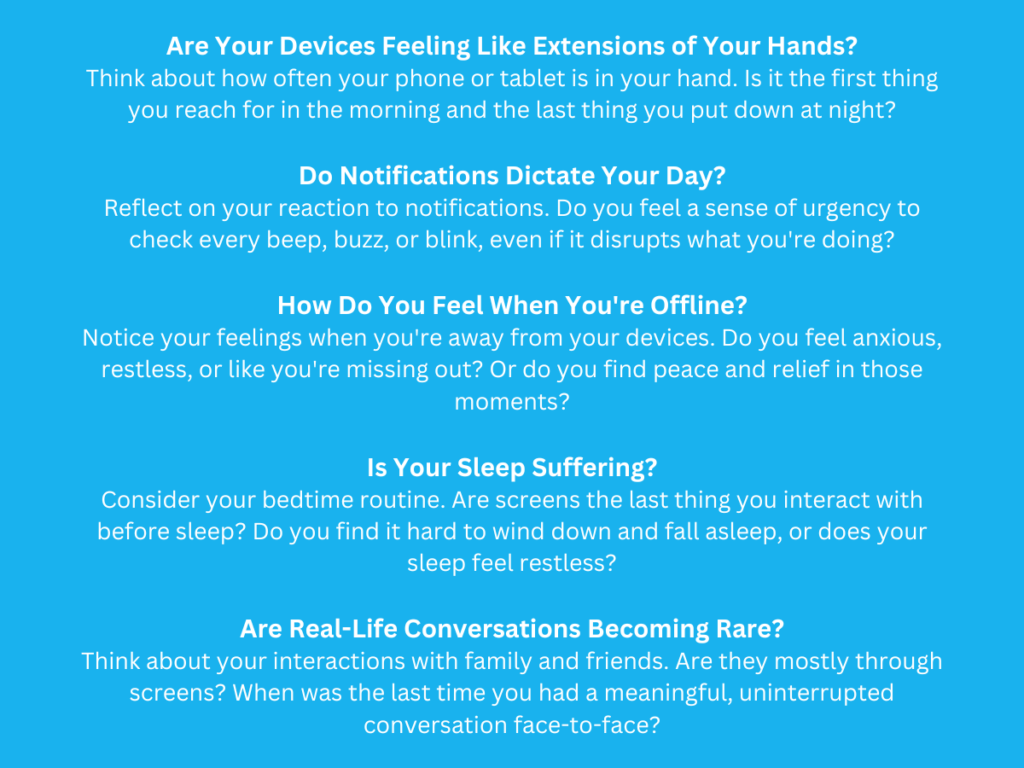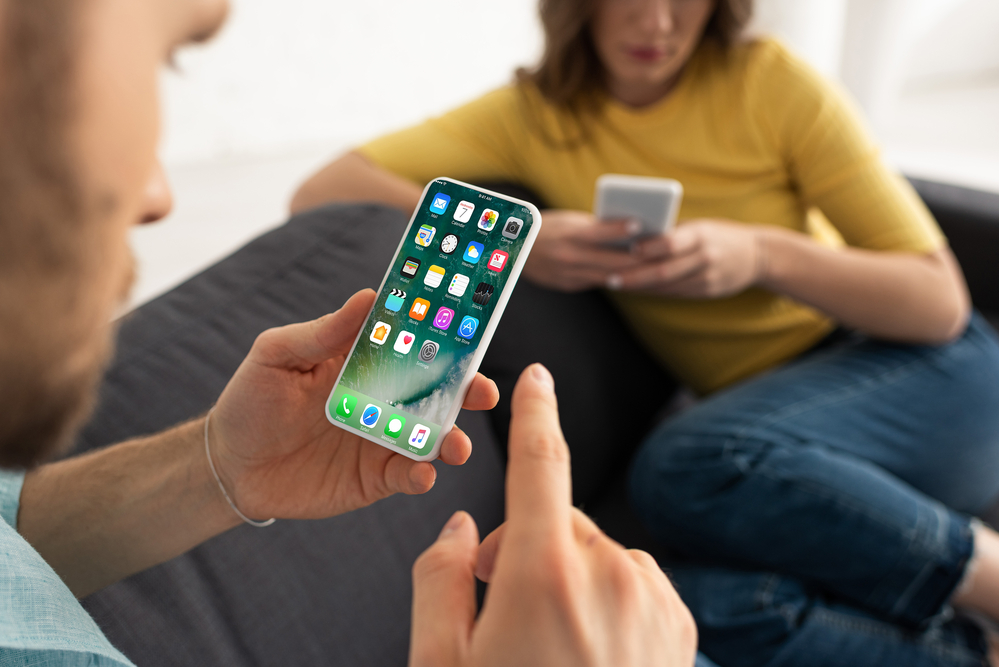In today’s world, where digital devices have become an extension of ourselves, the idea of a “digital detox” has become increasingly important.
Our lives are filled with screens from the moment we wake up until we go to bed, leading to an ever-growing reliance on digital connections. While these devices offer unparalleled convenience and access to information, their constant presence raises important questions about our mental well-being and the quality of our interactions in the real world.
This blog explores the concept of digital detoxification—intentionally reducing screen time to improve mental health—and examines its many benefits, supported by recent research findings.
The Negative Impact of Excessive Screen Time
The line between connectivity and overload is increasingly blurred in our digital age. Digital devices, integral to modern life, offer unparalleled opportunities for learning, creativity, and staying in touch. Yet, the flip side of this connectivity is the challenge of managing our screen time to safeguard our physical and mental health.
Physical Health: While our screens keep us informed and entertained, extended use can lead to digital eye strain, characterized by discomfort and difficulty focusing. Sitting around too much because we’re glued to screens can also lead to other health problems. It’s really important to mix in some physical activity with our screen time to stay healthy.
Mental Well-being: Digital devices can be a double-edged sword; they provide a platform for social connection but can also lead to anxiety and isolation, especially when usage displaces real-world interactions.
Blue light from screens can disrupt natural sleep patterns and impact our mood and cognitive function. Recognizing and moderating our screen use can help mitigate these effects, ensuring technology serves as a tool for enhancement rather than a source of stress.
Social and Cognitive Development: While technology facilitates access to information and virtual communities, excessive screen time may impact our ability to engage in deep, meaningful relationships and hinder developmental milestones in younger audiences. Encouraging a mix of online and offline experiences can enrich social and cognitive skills.
Balancing Productivity: The convenience of digital tools can boost productivity, yet constant notifications and the lure of multitasking can diminish focus and efficiency. Setting boundaries around tech use can help reclaim concentration and foster creativity, allowing for periods of uninterrupted thought and exploration.
Embracing digital devices as part of a balanced lifestyle where we remain mindful of our screen time can enhance our well-being. By adopting a more intentional approach to technology use, we can enjoy the benefits of connectivity without compromising our health, relationships, and productivity.
The first step towards establishing a healthier relationship with our digital world is recognizing the need for balance.
Recognizing the Need for a Digital Detox
In our journey towards holistic health and natural healing, it’s crucial to consider not just what we eat or how we move but also how we interact with the digital world around us. Like the food that nourishes our bodies, our digital content can deeply affect our mental and emotional well-being.
If you’ve been feeling a bit off lately and can’t quite pinpoint why, it might be time to reflect on your screen time habits. Here’s a guide to help you evaluate whether you might benefit from a digital detox:

Reflecting on Your Answers:
If you found yourself nodding along or recognizing some of these patterns in your own life, it might be time to consider a digital detox. This doesn’t mean you need to abandon technology altogether. Instead, it’s about finding a healthier balance that allows you to enjoy the benefits of connectivity without letting it detract from your overall well-being.
Planning Your Digital Detox
Starting a digital detox is an intentional path that requires thoughtful preparation beyond the mere wish to reduce screen time. It starts with setting clear objectives for what you hope to achieve, such as enhancing your sleep quality, alleviating stress, or enriching your real-world interactions.
Identifying the aspects of your digital life that need adjustment—be it the endless hours spent on social media, the compulsive checking of news feeds, or the habit of streaming shows into the late hours—helps you effectively target your efforts.
Creating practical boundaries for device use is crucial. This involves establishing screen-free times and places within your daily routine, like during meals or in the bedroom, to encourage better habits.
Integrating enriching, screen-free activities into your life is equally important. Whether it’s exploring a new hobby, reconnecting with nature, or spending quality time with loved ones, these alternatives can significantly enhance your detox experience.
Enlisting the support of friends and family can also smooth the path to a successful digital detox. Sharing your goals and plans with those around you not only fosters a supportive environment but may also inspire others to reflect on their own digital habits.
The essence of a digital detox is not getting rid of technology altogether but cultivating a more balanced and mindful approach to its use.
By carefully planning your digital detox, you pave the way for a more fulfilling engagement with the digital world, one that respects the boundaries between online connectivity and the richness of life beyond the screen.
Implementing Your Digital Detox
With a plan in place, the next step is to bring your digital detox into action. The key to a successful detox is gradually reducing your screen time in a manageable and sustainable way.
- Start by turning off non-essential notifications to minimize distractions. This simple act can significantly decrease the urge to constantly check your phone, allowing for longer periods of focused activity or relaxation.
- Creating tech-free zones in your home, such as the dining area or bedroom, can foster healthier habits, encouraging more meaningful interactions with family members and a better night’s sleep.
- Establishing screen-free times, especially during family gatherings, meals, and the crucial hours before bedtime, reinforces the importance of presence and mindfulness in our daily routines.
As you reduce your screen time, filling the newfound gaps with rewarding activities is essential. Engaging in physical exercise, rediscovering hobbies that got lost in the digital shuffle, and spending time in nature are not just fulfilling alternatives to screen time; they’re investments in your physical and mental health. These activities offer a sense of achievement and joy that screen-based entertainment seldom matches.
Incorporating mindfulness practices and meditation into your daily routine can further aid in detaching from digital devices. These practices help cultivate a state of inner calm and awareness, making it easier to resist the pull of digital distractions.
Implementing your digital detox is an ongoing process that requires adaptability and patience. As you progress, you will likely notice improvements in your mental and physical well-being, a deeper appreciation for the world around you, and a more balanced approach to technology use.
Embracing the Journey: Overcoming Challenges and Celebrating the Benefits
A digital detox is a transformative journey, marked by its challenges but also its profound benefits. As you navigate the path towards a healthier digital life, you’ll encounter hurdles such as the temptation to revert to old habits and feelings of disconnect or boredom. However, the strategies to overcome these—such as engaging in new hobbies, setting realistic goals, and seeking support—pave the way for significant positive changes.
The impact of your digital detox becomes apparent as you begin to notice improvements in your mental and physical well-being.
Many report enhanced sleep quality, reduced anxiety, and a more profound sense of presence in their daily lives. The benefits extend beyond the personal; detoxing from digital devices can lead to richer real-world interactions and a renewed appreciation for life’s simple pleasures.
Remember that this process is not about renouncing technology but rediscovering how to use it to enrich rather than detract from your life. This journey is not a one-time effort but a continuous exploration of how to harmonize our digital and physical worlds to foster well-being, connection, and happiness.
Disclaimer: The information provided in our blog posts is for educational and informational purposes only and is not intended as medical advice. While we strive to share knowledge and insights on health-related topics, this content should not be used as a substitute for professional medical advice, diagnosis, or treatment. Always consult with a qualified healthcare professional regarding any medical concerns or decisions related to your health and well-being.
Resources:
Bettancourt, N., Pérez, C., Candia, V., Guevara, P., Kalaidzidis, Y., Zerial, M., Segovia-Miranda, F., & Morales-Navarrete, H. (2023). Virtual tissue microstructure reconstruction by deep learning and fluorescence microscopy. https://www.semanticscholar.org/paper/2960edccd356e7ea64219b5aa73e2c39b3d41062
Dementieva, D., Babakov, N., & Panchenko, A. (2024, April 2). MultiParaDetox: Extending Text Detoxification with Parallel Data to New Languages. arXiv.org. https://arxiv.org/abs/2404.02037
Handa, M., & Ahuja, P. (2020). Disconnect to detox: a study of smartphone addiction among young adults in India. https://www.semanticscholar.org/paper/822ee8846ed6aacccc5e28ea660008738720956e



